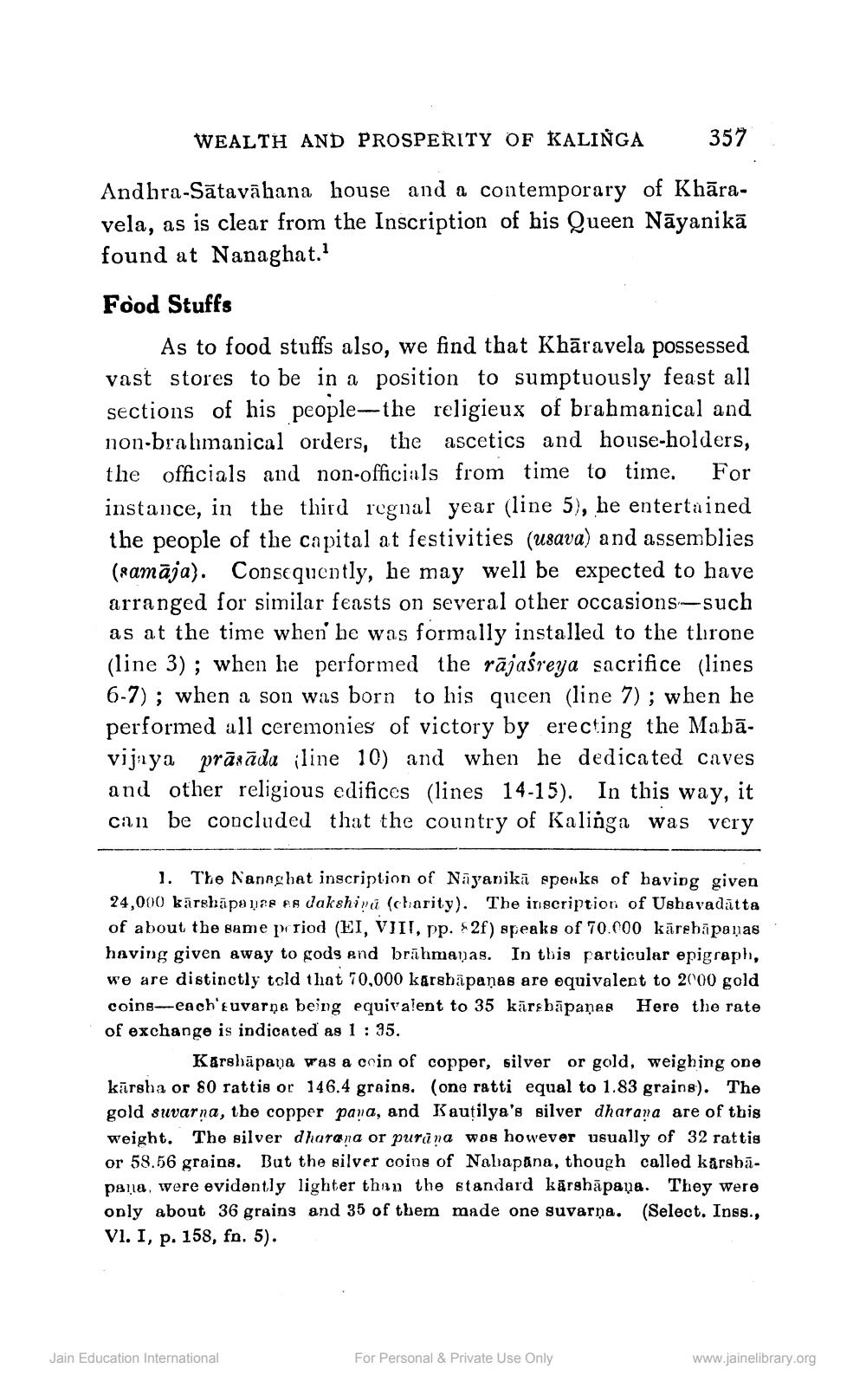________________
WEALTH AND PROSPERITY OF KALINGA
357
Andhra-Sātavāhana house and a contemporary of Khāravela, as is clear from the Inscription of his Queen Nāyanikā found at Nanaghat." Food Stuffs
As to food stuffs also, we find that Kbāravela possessed vast stores to be in a position to sumptuously feast all sections of his people--the religieux of brahmanical and non-bralımanical orders, the ascetics and house-holders, the officials and non-officials from time to time. For instance, in the third regnal year (line 5), he entertained the people of the capital at festivities (usava) and assemblies (ramāja). Consequently, he may well be expected to have arranged for similar feasts on several other occasions-such as at the time when he was formally installed to the throne (line 3); when he performed the rājaśreya sacrifice (lines 6-7); when a son was born to his queen (line 7); when he performed all ceremonies of victory by erecting the Mabāvijaya prārāda iline 10) and when he dedicated caves and other religious edifices (lines 14-15). In this way, it can be concluded that the country of Kalinga was very
1. The Nannghat inscription of Nāyanikā speaks of having given 24,000 kärshāpaies en dakshina (charity). The inscription of Ushavadātta of about the same period (EI, VIII, pp. 2f) speaks of 70.000 kārebapaņas having given away to gods end brāhmayas. In this particular epigraph, we are distinctly told that 70,000 karshāpaņas are equivalent to 2000 gold coing-each'suvarne being equivalent to 35 kārbāpaņas Here the rate of exchange is indicated as 1 : 35.
Karshāpana was a coin of copper, silver or gold, weighing one kārsha or 80 rattis or 146.4 grains. (one ratti equal to 1.83 grains). The gold suvarna, the copper pava, and Kautilya's silver dharana are of this weight. The silver dharana or purana wos however usually of 32 rattis or 58.56 grains. But the silver coins of Nabapana, though called karsbāpana, were evidently lighter than the standard kārshāpaņa. They were only about 36 grains and 35 of them made one suvarņa. (Select. Inss., VI. I, p. 158, fn. 5).
Jain Education International
For Personal & Private Use Only
www.jainelibrary.org




